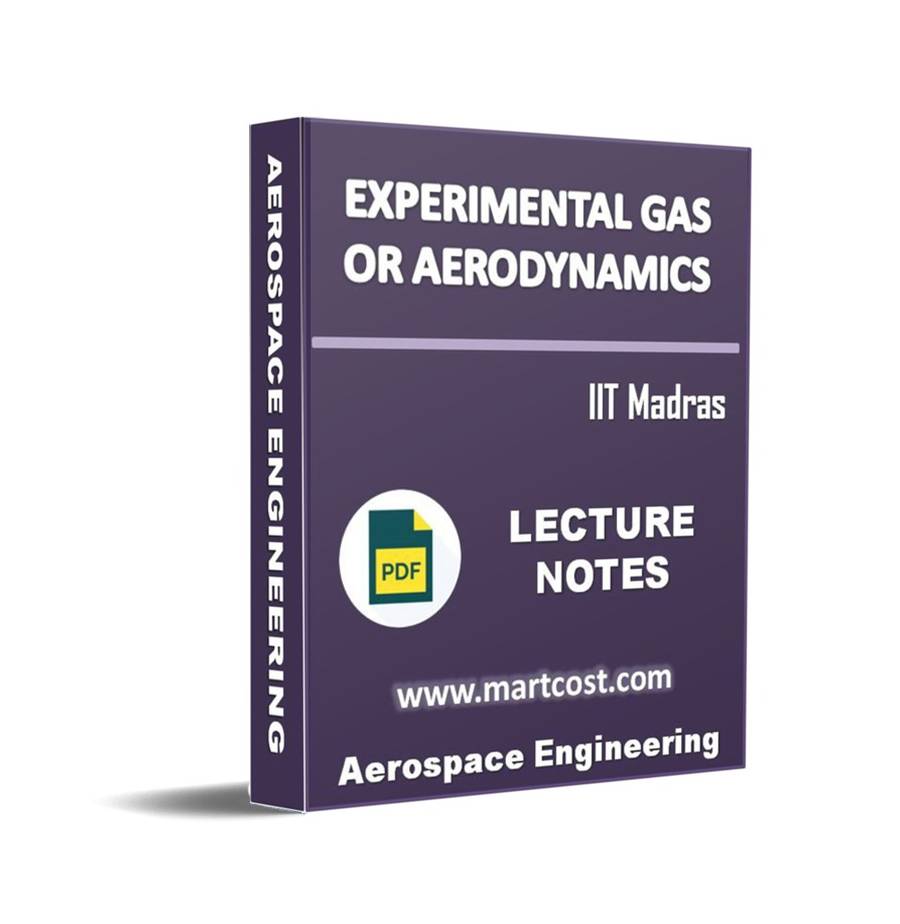Description
Name of Notes : – Experimental Gas or Aerodynamics Lecture Note
Introduction
Modern aerodynamics only dates back to the seventeenth century, but aerodynamic forces have been harnessed by humans for thousands of years in sailboats and windmills, and images and stories of flight appear throughout recorded history, such as the Ancient Greek legend of Icarus and Daedalus. Fundamental concepts of continuum, drag, and pressure gradients appear in the work of Aristotle and Archimedes.
In 1726, Sir Isaac Newton became the first person to develop a theory of air resistance, making him one of the first aerodynamicists. Dutch–Swiss mathematician Daniel Bernoulli followed in 1738 with Hydrodynamics in which he described a fundamental relationship between pressure, density, and flow velocity for incompressible flow known today as Bernoulli’s principle, which provides one method for calculating aerodynamic lift In 1757, Leonhard Euler published the more general Euler equations which could be applied to both compressible and incompressible flows. The Euler equations were extended to incorporate the effects of viscosity in the first half of the 1800s, resulting in the Navier–Stokes equations. The Navier-Stokes equations are the most general governing equations of fluid flow and but are difficult to solve for the flow around all but the simplest of shapes.
In 1799, Sir George Cayley became the first person to identify the four aerodynamic forces of flight (weight, lift, drag, and thrust), as well as the relationships between them, and in doing so outlined the path toward achieving heavier-than-air flight for the next century. In 1871, Francis Herbert Wenham constructed the first wind tunnel, allowing precise measurements of aerodynamic forces. Drag theories were developed by Jean le Rond d’Alembert, Gustav Kirchhoff, and Lord Rayleigh. In 1889, Charles Renard, a French aeronautical engineer, became the first person to reasonably predict the power needed for sustained flight. Otto Lilienthal, the first person to become highly successful with glider flights, was also the first to propose thin, curved airfoils that would produce high lift and low drag. Building on these developments as well as research carried out in their own wind tunnel, the Wright brothers flew the first powered airplane on December 17, 1903.
During the time of the first flights, Frederick W. Lanchester, Martin Kutta, and Nikolai Zhukovsky independently created theories that connected circulation of a fluid flow to lift. Kutta and Zhukovsky went on to develop a two-dimensional wing theory. Expanding upon the work of Lanchester, Ludwig Prandtl is credited with developing the mathematics behind thin-airfoil and lifting-line theories as well as work with boundary layers.
Modules / Lectures
- Exercise for Module – 1
- Exercise for Module – 2
- Exercise for Module – 3
- Exercise for Module – 4
- Exercise for Module – 5
- Exercise for Module – 6
- Exercise for Module – 7
- Exercise for Module – 8






Reviews
There are no reviews yet